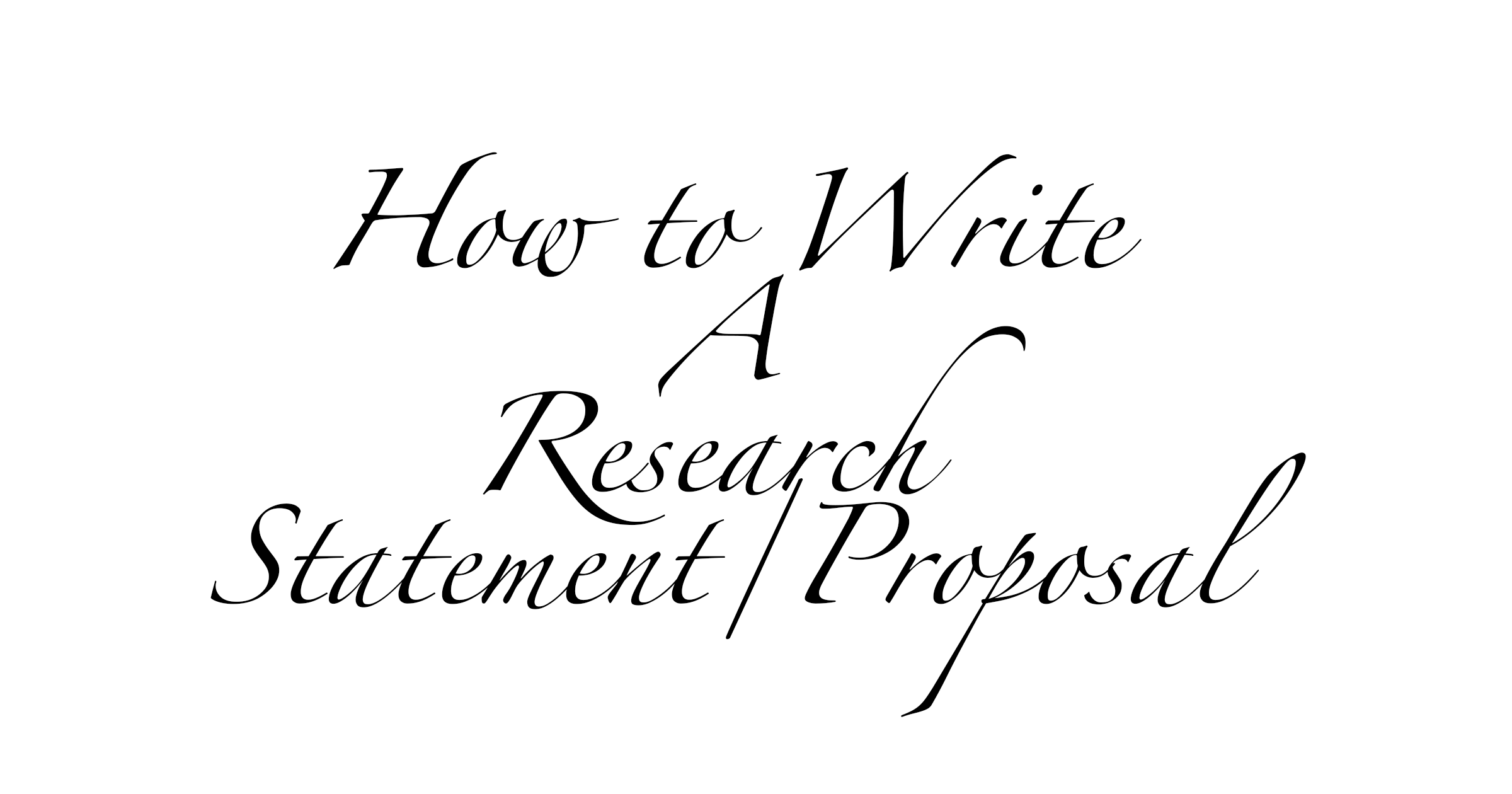Research Statement/Proposal
Research Statement/Proposal
The research statement (or statement of research interests) is a common component of academic job applications. It is a summary of your research accomplishments, current work, and future direction and potential of your work.
A research statement typically has four components:
- Introduction
- Literature review
- Methodology
- Practicalities
Introduction
Background and Context
Set the scene by providing some background contextual information for the reader. Explain any core concepts and terminology so that someone who is NOT a topic expert will have the necessary information to understand the research problem you will present (in the next section).
Problem Statement or Research Problem
Based on the background and context you’ve just presented, clearly explain and articulate the research problem you will aim to address or solve. You may feel that your problem is obvious, but you must make it explicit here.
Don’t assume the reader will connect the dots - always write for the non-expert reader.
Research Rationale
Here you need to explain what value your research will create, both to the research or academic community as well as practitioners. State clearly who will benefit from your research, how they’ll benefit, and how much they’ll benefit. Consider all stakeholders.
Research Questions
State your research aims/objectives/questions based on the above. If required, also state your specific research questions.
Others
If there are any other components that your university specifically requires you to discuss in the introduction section, include those here. This may include things such as hypotheses, personal motivation, or something else. Depending on what they are, you may wish to merge them with the preceding sections.
Literature Review
Theoretical Framework
A theoretical framework is a set of concepts and ideas that are used to explain, understand, and guide your study. It provides a way of organizing your study within a broader context of existing knowledge and theory.
Start off by discussing and synthesizing the key theories, models, and frameworks that will form the theoretical foundation of your study. Clearly define and justify all the constructs you will work with and ensure that any potentially ambiguous terms are defined.
Empirical Research
Discuss and synthesize the findings of your empirical (evidence-based) studies that are relevant to your proposed study. If your topic is very novel, look at adjacent literature (i.e. research investigating similar or the same constructs within a different context).
In terms of structure, you may wish to present this thematically, chronologically, or methodologically.
Research Gap
Based on the two previous components, clearly articulate the research gap. It may seem obvious, but you still need to build a clear, strong argument as to what type of gap exists and why that’s meaningful.
Methodology [What & Why]
Opening Section
It’s a good idea to present a brief introduction and overview regarding your methodology upfront. For example, you could state that you will take either a qualitative or quantitative approach (and why). Keep the section brief
Data Collection
Clearly describe how you will collect your data - e.g. survey, interviews, focus groups, etc. Justify why you chose this approach and how this will help you achieve your broader research aim(s).
Sampling
Clearly describe and justify your sampling strategy. Which sampling method will you adopt and why? What will your sample size be and how will you ensure that you achieve this?
Data Analysis
Describe in as much detail as possible how you will prepare, clean, and analyze the data that you will collect. Try to be as specific as possible regarding your actual analysis method - for example:
- Qualitative - thematic analysis, content analysis, narrative analysis, etc.
- Quantitative - descriptive stats, inferential stats, etc.
Others
If there are any other components that your university specifically requires you to discuss in the methodology section, be sure to include them, either here or as part of the preceding sections. This may include things like:
- Research philosophy (it’s usually good to present this very early, as the rest of the methodological choices hang from this).
- Research design (e.g., case study, descriptive, correlation, etc.)
- Limitations
- Ethical considerations
Practicalities
Dissertation Outline or Structural Overview
If requested by your university, provide a brief outline of how you will structure your dissertation, thesis, or final research project. Try to provide more than just a bullet-point outline though - explain with a line or two, what you will cover in each section.
Project Plan and Timelines
If requested by your university, provide a provisional project plan for your actual study, outlining the core activities, stages, etc. Consider using a Gantt chart to articulate the timeline you’re working on.
Budget
If required by your university, provide a basic budget for your project. If you are applying for funding, you need to pay particular attention to this section and be as thorough as possible.
Others
Other things that you may consider including within the proposal (not necessarily this section):
- Provisional research title
- Anticipated outcomes
- Dissemination strategy
- Abstract or exec summary
- Personal statement
References & Appendices
Close off your document by providing a full reference list in the format prescribed by your institution (for example - Harvard referencing, APA, MLA, etc.)
Be sure to use reference manager software to handle this aspect of your document. Such as Endnotes, Mendeley, or Zotero.
If applicable, the final component will be your appendices. This can typically be used to include supporting but non-essential information. However, check what your university expects, and don’t expect the appendices to earn you any marks.
